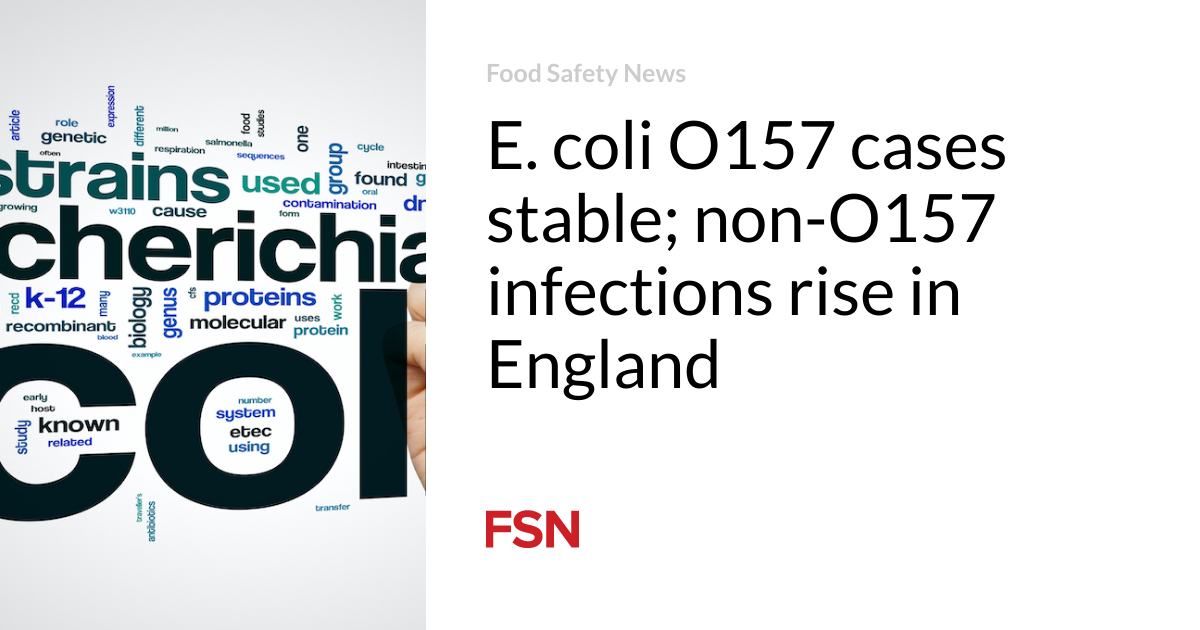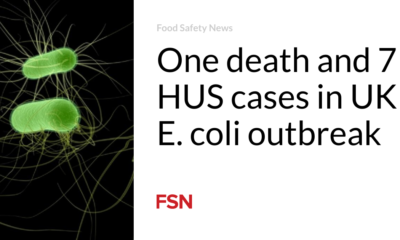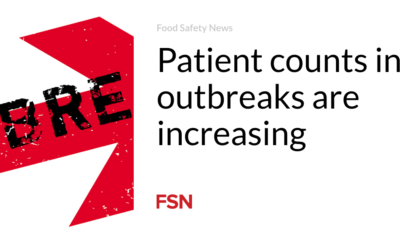Food
E. coli O157 cases stable; non-O157 infections are increasing in England

The number of Shiga toxin-producing E. coli (STEC) O157 infections remained stable, but non-O157 cases increased in England in 2021 according to recently released data.
A total of 1,151 confirmed cases of STEC were reported in England in 2021. This included 365 cases of STEC O157 and 786 cases in which non-O157 was isolated. An additional 443 patients had their samples confirmed as STEC by testing positive for Shiga toxin genes via PCR, but E. coli was not cultured.
Fourteen confirmed cases were infected with multiple serogroups, according to data from the UK Health Security Agency (UKHSA).
In 2020, 365 cases of O157 were recorded, compared to 515 in 2019. The figures in 2020 and 2021 were the lowest reported annually since 1996. Officials said it was likely that the COVID-19 pandemic and reduced travel abroad contributed to these findings.
E. coli O157 and four outbreaks
About a third – 127 out of 365 – of confirmed STEC O157 patients were hospitalized and six developed hemolytic uremic syndrome (HUS), a serious complication that can lead to kidney failure. The duration of hospital stay ranged from 1 to 7 days, with a median of 2 days. Three HUS patients were younger than 5 years old, but generally ranged from 1 to 25 years old.
The lowest incidence of STEC O157 was in the East Midlands region and the highest in the North East. Children aged 1 to 4 years had the highest annual incidence of infections. An infection peak was recorded in the summer months of July and August.
Four E. coli outbreaks involved 52 people, with 10 to 19 patients each. Two were STEC O157 and suspect vehicles were identified and two involved STEC O26 and the sources were not found.
The first O157 outbreak involved ten people, two of whom were hospitalized. One person with underlying health conditions died. Epidemiological investigations have shown that a composite product, a multi-ingredient pasta pot, is the likely agent of contamination.
The second O157 outbreak affected 17 people, 10 of whom lived in England, six in Wales and one in Scotland. The average age was 21 years. Six people were hospitalized. Epidemiological research has shown that watermelons are the likely vehicle of infection.
In an E. coli O26 outbreak, there were 25 confirmed cases, of which 17 were in England, three in Scotland, two in Northern Ireland and Wales, and one in Ireland. Ten people were hospitalized.
Another E. coli O26 outbreak involved 19 patients, 15 of whom were laboratory confirmed. Eleven lived in England, while Northern Ireland, Scotland and Wales each had one patient. The average age was 41 years.
Non-O157 data
In 2021, 6,610 human faecal samples were received for testing in England and 1,234 were confirmed as non-O157 STEC cases, an increase of 46 percent compared to 2020. Of these, 786 culture-positive cases from 83 serogroups were confirmed. Three people died.
The five most common serogroups were O26, O146, O91, O128ab and O145. The main isolated type was 145 times STEC O26.
Of the 1,234 confirmed non-O157 patients in England, 555 were women. The lowest incidence was in Yorkshire and the Humber, while the highest was in the London region and children under 1 year of age had the highest incidence of infection.
A total of 274 of 431 confirmed non-O157 patients were hospitalized and 14 of 1,234 cases developed HUS. Of the HUS cases, O26 was isolated nine times and O145 twice. HUS patients ranged from 7 months to 29 years old and eight were between 1 and 4 years old.
“Since 2018, the number of STEC O157 reports has decreased and the number of STEC non-O157 reports has doubled (218 percent). Overall, there has been an increase in STEC reporting, and the burden on public health and clinical services is also increasing, especially given the two-fold increase in hospital admissions reported in 2021 for non-O157 cases,” said UKHSA .
(To sign up for a free subscription to Food Safety News, click here.)













